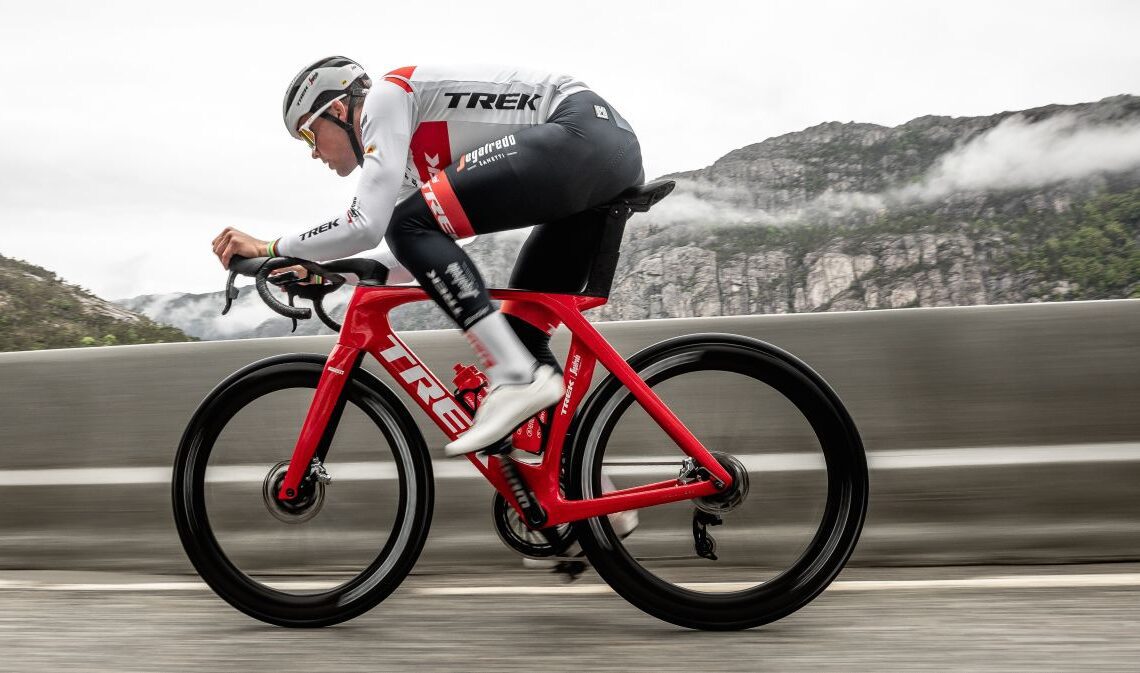With the launch of the Gen 7 Madone, Trek Bikes has come up with some radical solutions to make its premier aero race bike even faster, while saving 300 grams of weight.
“All told, the new bike is around 60 seconds per hour faster than the previous model, including the rider,” says Jordan Roessingh, director of road bikes at Trek.
Although that’s measured at 45km/h, you get that gain regardless of how fast you’re riding; it’s pretty much the same time saving whether you’re riding at 45km/h, 35km/h or even 25km/h, Trek says.
“The new bike is almost 300 grams lighter than the previous Madone, so it’s also the lightest Madone Disc that we’ve ever made. We did all of this while still retaining the amazing ride quality of the Madone. It’s been one of the things that the platform has always been known for,” Roessingh continues.
Here’s how Trek has engineered the Gen 7 Madone to achieve these three objectives.
A brief history of the Trek Madone
Trek has given the Madone name to its premier race bike ever since 2003 and Cyclingnews has covered every new iteration from 2004 (although those early bikes are now archived).
It was only in 2016 that the Madone got its characteristic deep aero tube profiles that we know today. That came as bicycle designers increasingly recognised the importance of aerodynamics and the weight penalty from aero tube profiles began to reduce. The 2016 bike also incorporated IsoSpeed to help isolate the rider from the road, while the 2018 bike was the first Madone to include adjustable IsoSpeed and add disc brakes.
Pro-level performance
The Madone has always been a pro-level bike and when Trek started to design the new Gen 7, it began by asking its Trek-Segafredo pros what they wanted from the new bike.
2019 World Champion Mads Pedersen won Stage 13 of the Tour de France on the Gen 7 Madone and has been closely involved in the development and testing of the new bike.
“The ideal race bike for professional cyclists is definitely something really aero and also light,” he says.
That meant that the pros asked for a solution that was lighter than the previous Madone’s adjustable IsoSpeed, while still keeping the bike’s comfort.
A new aero design for the bike’s seat tube
Click Here to Read the Full Original Article at CyclingNews RSS Feed…

